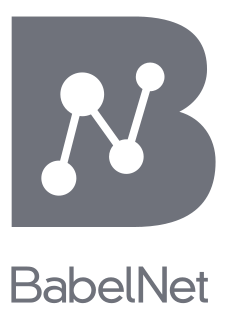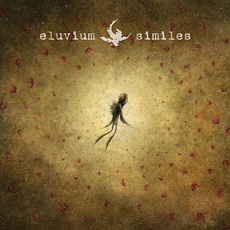This page is based on this
Wikipedia article Text is available under the
CC BY-SA 4.0 license; additional terms may apply.
Images, videos and audio are available under their respective licenses.

A semantic network, or frame network is a knowledge base that represents semantic relations between concepts in a network. This is often used as a form of knowledge representation. It is a directed or undirected graph consisting of vertices, which represent concepts, and edges, which represent semantic relations between concepts, mapping or connecting semantic fields.
In computational linguistics, word-sense disambiguation (WSD) is an open problem of natural language processing and ontology. WSD is identifying which sense of a word is used in a sentence, when the word has multiple meanings. The solution to this problem impacts other computer-related writing, such as discourse, improving relevance of search engines, anaphora resolution, coherence, inference, et cetera.
Metamorphic code is code that when run outputs a logically equivalent version of its own code under some interpretation. This is similar to a quine, except that a quine's source code is exactly equivalent to its own output. Metamorphic code also usually outputs machine code and not its own source code.
In linguistics, semantic analysis is the process of relating syntactic structures, from the levels of phrases, clauses, sentences and paragraphs to the level of the writing as a whole, to their language-independent meanings. It also involves removing features specific to particular linguistic and cultural contexts, to the extent that such a project is possible. The elements of idiom and figurative speech, being cultural, are often also converted into relatively invariant meanings in semantic analysis. Semantics, although related to pragmatics, is distinct in that the former deals with word or sentence choice in any given context, while pragmatics considers the unique or particular meaning derived from context or tone. To reiterate in different terms, semantics is about universally coded meaning, and pragmatics, the meaning encoded in words that is then interpreted by an audience.
Zmist is a metamorphic computer virus created by the Russian virus writer known as Z0mbie. It was the first virus to use a technique known as "code integration". In the words of Ferrie and Ször:
This virus supports a unique new technique: code integration.
The Mistfall engine contained in it is capable of
decompiling Portable Executable files to [their] smallest
elements, requiring 32 MB of memory. Zmist will insert
itself into the code: it moves code blocks out of the way,
inserts itself, regenerates code and data references, including
relocation information, and rebuilds the executable.
Haystack was a project at the Massachusetts Institute of Technology to research and develop several applications around personal information management and the Semantic Web. The most notable of those applications is the Haystack client, a research personal information manager (PIM) and one of the first to be based on semantic desktop technologies. The Haystack client is published as open source software under the BSD license.
Equative is a case prototypically expressing the standard of comparison of equal values. The equative case has been used in very few languages in history. It was used in the Sumerian language, where it also took on the semantic functions of the essive case and similative case.
In computing, linked data is a method of publishing structured data so that it can be interlinked and become more useful through semantic queries. It builds upon standard Web technologies such as HTTP, RDF and URIs, but rather than using them to serve web pages only for human readers, it extends them to share information in a way that can be read automatically by computers. Part of the vision of linked data is for the internet to become a global database.
Exhibit is a lightweight, structured-data publishing framework that allows developers to create web pages with support for sorting, filtering and rich visualizations. Oriented towards semantic web-type problems, Exhibit can be implemented by writing rich data out to HTML then configuring some CSS and Javascript code.
In grammar, denominal verbs are verbs derived from nouns. Many languages have regular morphological indicators to create denominal verbs.
Disambiguation is word-sense disambiguation, the process of identifying which meaning of a word is used in context.
Neurath's boat is a simile used in anti-foundational accounts of knowledge, especially in the philosophy of science, which was first formulated by Otto Neurath. It is based in part on the Ship of Theseus which, however, is standardly used to illustrate other philosophical questions, to do with problems of identity. It was popularised by Willard Van Orman Quine in Word and Object (1960).
SemEval is an ongoing series of evaluations of computational semantic analysis systems; it evolved from the Senseval word sense evaluation series. The evaluations are intended to explore the nature of meaning in language. While meaning is intuitive to humans, transferring those intuitions to computational analysis has proved elusive.
Realism, Realistic, or Realists may refer to:

BabelNet is a multilingual lexicalized semantic network and ontology developed at the Sapienza University of Rome, at the Department of Computer Science Linguistic Computing Laboratory. BabelNet was automatically created by linking Wikipedia to the most popular computational lexicon of the English language, WordNet. The integration is done using an automatic mapping and by filling in lexical gaps in resource-poor languages by using statistical machine translation. The result is an "encyclopedic dictionary" that provides concepts and named entities lexicalized in many languages and connected with large amounts of semantic relations. Additional lexicalizations and definitions are added by linking to free-license wordnets, OmegaWiki, the English Wiktionary, Wikidata, FrameNet, VerbNet and others. Similarly to WordNet, BabelNet groups words in different languages into sets of synonyms, called Babel synsets. For each Babel synset, BabelNet provides short definitions in many languages harvested from both WordNet and Wikipedia.



